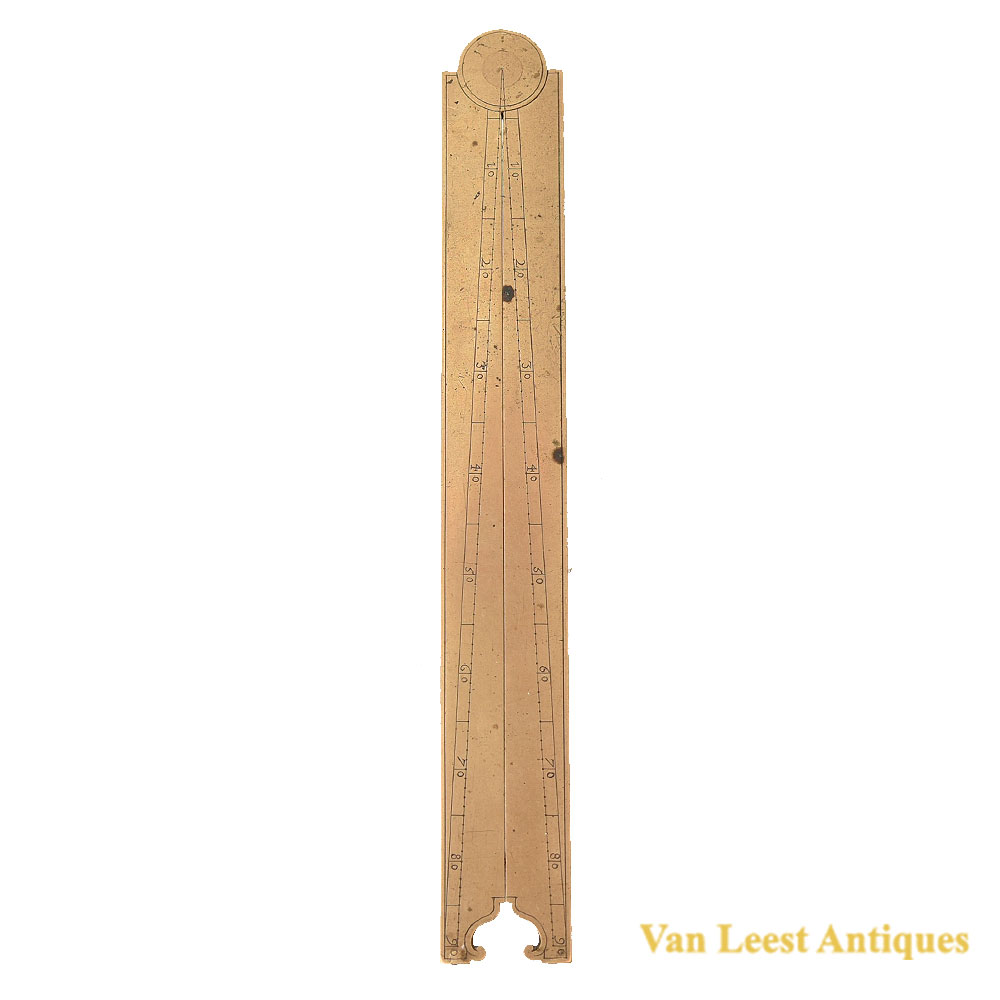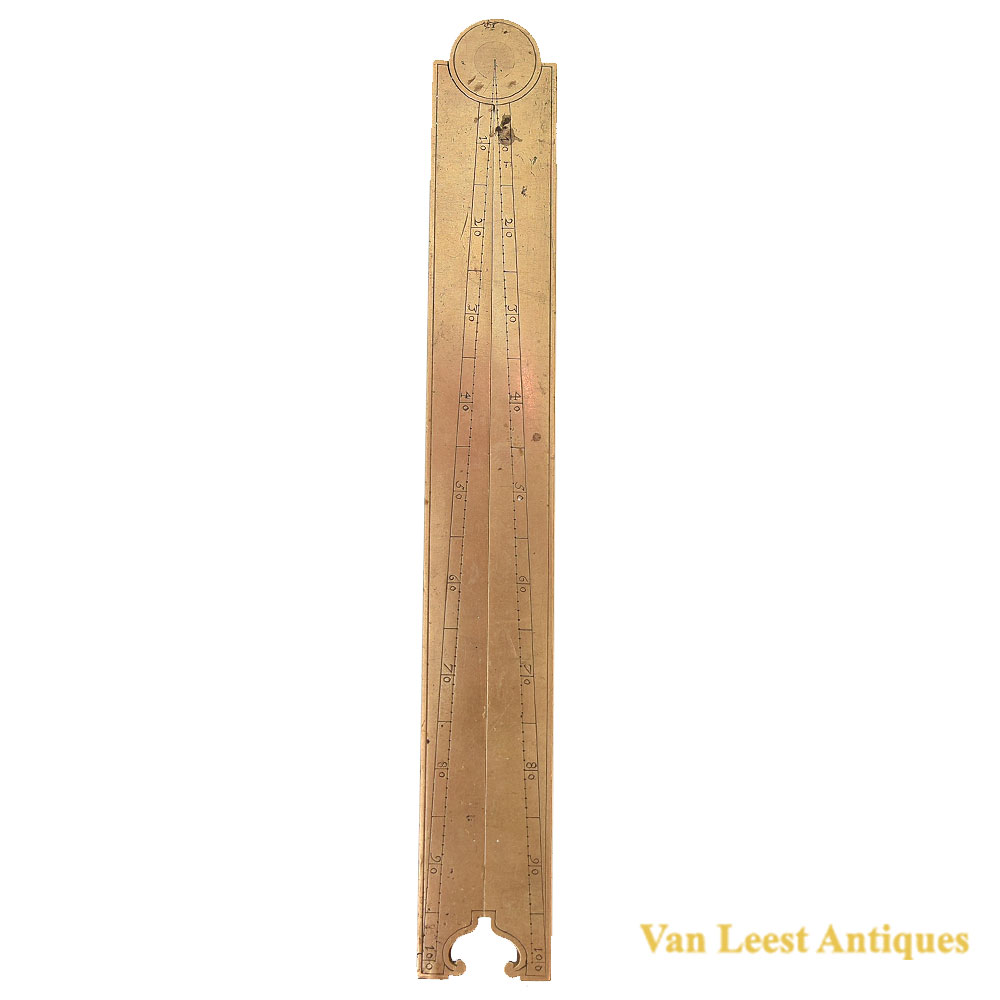Description
This brass sector from the early 17th century was designed by Christoph Clavius and features intricate decorations on the bottom, along with a pin to hold it together. Christoph Clavius is renowned for his role in the introduction of the Gregorian calendar, correcting the Julian calendar introduced by Julius Caesar in 46 BC, which had an error of three leap years every 385 years.
Clavius was born in a German region and given a Latin name. Some suggest his original name could have been ‘Clau,’ ‘Klau,’ or ‘Schlüssel,’ which means ‘key’ in German, though there is no solid evidence for this. He joined the Jesuit Order in 1555 and was educated within the order. In 1556, he was sent to the Jesuit College at the University of Coimbra in Portugal, where he excelled in mathematics.
During his studies, Clavius witnessed a solar eclipse that profoundly impacted him, leading him to write about it in his 1593 treatise, *In sphaeram Ioannis de Sacro Bosco Commentariu*. He described the eclipse he observed at midday in Coimbra, Portugal, in 1559:
“I shall cite two remarkable eclipses of the Sun, which happened in my own time and thus not long ago. One of these I observed about midday at Coimbra in Lusitania [Portugal] in the year 1559 [sic], in which the Moon was placed between my sight and the Sun with the result that it covered the whole Sun for a considerable length of time. There was darkness in some manner greater than night; neither could one see where one stepped. Stars appeared in the sky and (marvelous to behold) the birds fell down from the sky to the ground in terror of such horrid darkness.”
Following this eclipse, Clavius devoted his life to mathematical and astronomical studies and became a professor at the Collegio Romano in Rome in 1564. Clavius was a significant promoter of mathematical knowledge in the 16th century and was the first to use the decimal point. His textbooks were widely used, influencing mathematicians like Leibniz and Descartes.
In 1574, Clavius produced a version of Euclid’s *Elements* incorporating his own ideas. He also wrote *Geometrica Practica* in 1604, where he introduced an instrument for measuring fractions of angles. He designed and produced various instruments, including sundials and a surveying quadrant, which is the design of the described sector A similar example can be found in the fifth volume of Ralph Kern’s *Wissenschaftliche Instrumenten in ihrer Zeit*. The one in our collection is of the same form and style but features more elaborate decorations on the bottom and is unsigned.
Measurments: 21,2 x 5 cm
Sold to a German Museum
Find out more on www.vanleestantiques.com
Ask the Dealer
Dealer information
 Van Leest Antiques
Van Leest Antiques
Van Leest Antiques
Van Leest Antiques, based in Utrecht in the Netherlands, specialises in antique scientific and medical instruments. Their collection covers mainly scientific and medical antique instruments: barometers, globes and planataria, nautical instruments, anatomical models, and pharmacy items. Toon Van Leest travels regularly in Europe and visits trade fairs, auctions, and antique dealers to collect stock and to find pieces to fulfil his clients' unusual requests.
As well as being an avid antique collector and dealer, Toon Van Leest is also a dentist. He believes that antiques are a stable investment, not reliant on trends or fashion, and have truly lasting value. Above all, he says, antiques are timeless and never lose their beauty.












